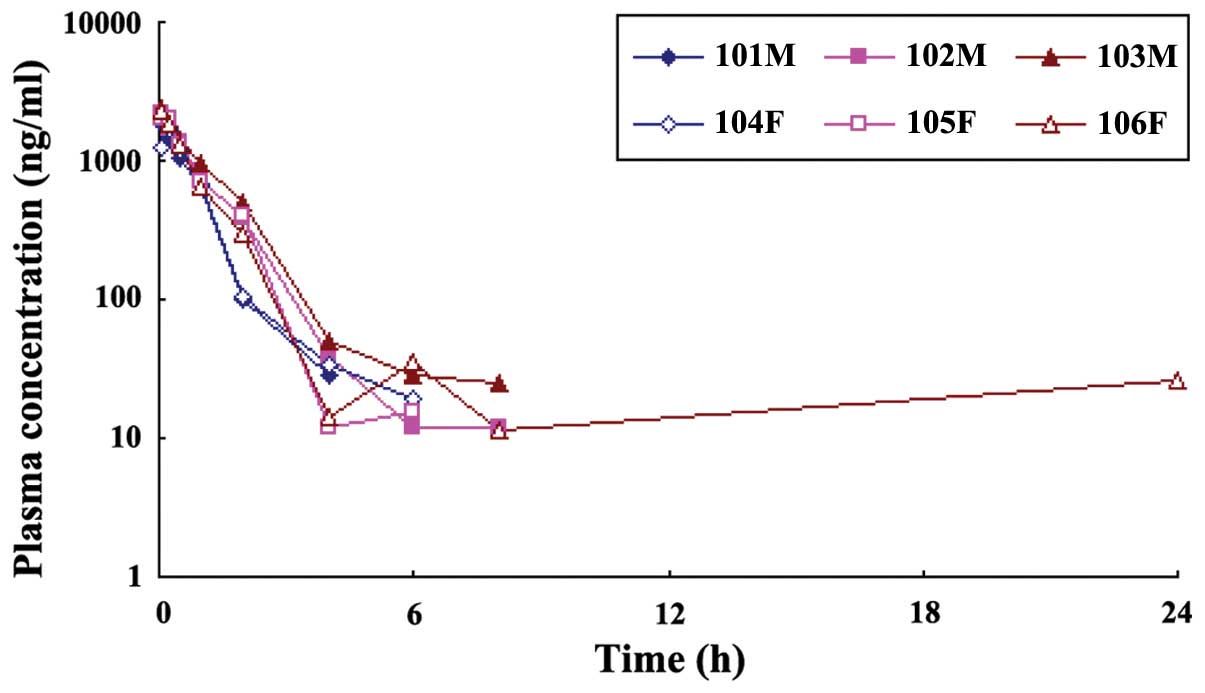A pharmacokinetic study of Isatin in Beagles' bodies
- Authors:
- Published online on: April 6, 2016 https://doi.org/10.3892/etm.2016.3232
- Pages: 2225-2228
-
Copyright: © Ren et al. This is an open access article distributed under the terms of Creative Commons Attribution License.
Metrics:
Total
Views: 0 (Spandidos Publications: | PMC Statistics:
)
Total PDF Downloads: 0 (Spandidos Publications: | PMC Statistics:
)
Abstract
Isatin are marine active drugs that exert anti-cancer effects, have a cancer‑prevention function, and possess many pharmacological activities. The study aimed to examine the pharmacokinetics of a single intravenous injection and oral medication of Isatin given to Beagles. Nine male and nine female Beagles were injected with 30 mg/kg of 2,3‑indole quinones. The animals were divided into 3 groups (n=6 per group) and lavaged with a dose of 15, 30 and 60 mg/kg, respectively. Blood samples were collected prior to the medicine delivery (0 h) and 0.083, 0.25, 0.5, 1, 2, 4, 6, 8 and 24 h post‑medicine delivery. The blood plasma samples were analyzed using the liquid chromatography-mass spectrometry (MS)/MS method following pretreatment for the protein precipitation. Pharmacokinetics software was applied to calculate relevant pharmacokinetic parameters through the atrioventricular model. The drug concentration in plasma decreased rapidly following the intravenous injection of Isatin. After 8 h, the prototype drugs could not be tested in the plasma and only trace amounts of drugs were tested in one dog, which was considered to be an endogenous drug. Indole quinone was absorbed following lavage into Beagles and peaked in <1 h, and the drug concentration in the plasma decreased rapidly. After 8 h, the prototype drugs could not be tested in the plasma. The elimination of the two drugs in the body had no evident gender differences. In conclusion, Isatin is rapidly absorbed in bodies of Beagles. Within the dose range of 15‑60 mg/kg, no linear relationship was observed for the increase in Cmax and AUC0-t values with the increased dose.












